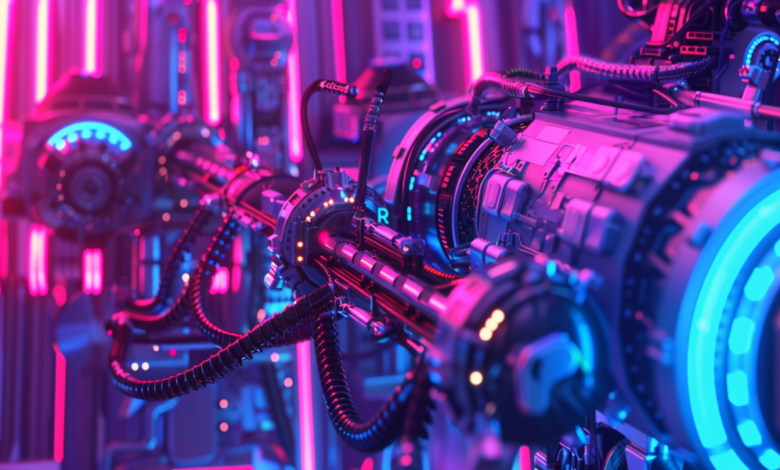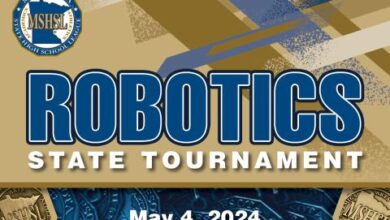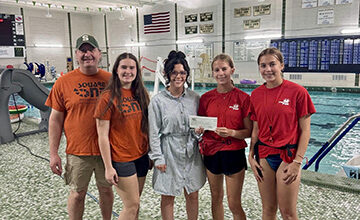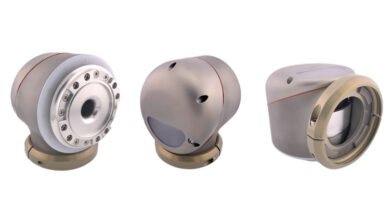Advancing Robotics with Multi-Scale Suction

Robots and the study of robotics are an ever-evolving field that continues to explore new avenues to make our processes more efficient and optimized. These efforts and explorations are often inspired by the nature and animal kingdoms around us. For example, scientists at the University of Bristol developed a robotic suction cup with super adaptive suction abilities similar to an Octopus’ biological suckers.
Octopus-Inspired Suction Mechanism in Robots
It all started with the Bristol Robotics Laboratory studying the structure of an octopus’s biological suckers that exhibit very high levels of suction abilities and can anchor to any rock in the most optimized way possible. This research led to the creation of a multi-layer soft structure and an artificial fluidic system that could behave like the musculature and mucus structures of an Octopus.
While explaining the most significant accomplishment of this research, Tianqi Yue, the lead author of the paper, said the following, “The most important development is that we successfully demonstrated the effectiveness of the combination of mechanical conformation – the use of soft materials to conform to surface shape, and liquid seal – the spread of water onto the contacting surface for improving the suction adaptability on complex surfaces. It may also be the secret behind biological organisms’ ability to achieve adaptive suction.”
The key development, therefore, is going a notch higher than the present mode of artificial suction and entering the realm of adaptive suction—the ability to attach to the most difficult and complex surfaces. This required a multi-suction mechanism, and the research demonstrated how to achieve it.
Historical Research to Better Understand How Octopus Suckers Work
Understanding how suction in Octopuses works has long been an area of interest for the scientific community. Researchers knew that Octopuses could move their suckers independently and grasp objects as and when needed.
A study conducted by researchers in Livorno looked into octopuses more than a decade back and found out that the sides and edges of their suckers were uniquely built. Their suckers had tiny, concentric groves, which helped them form a strong seal on any rough surface underwater.
Similar grooves could be seen in the upper section, too, resulting in a seal that was effective and strong yet low-pressure.
While inquiring more into this low-pressure phenomenon, researchers came up with more insights on the suckers. They found out that while the sides and edges of the suckers were squishy, the top was much stiffer. This lesser elasticity, in all probabilities, aided in the local generation of low-pressure, which made adhesion superior, robust, and efficient.
Since this discovery, there have been talks of mimicking Octopus suction mechanisms in robots. Now, we can see the efforts reaching fruition.
Multi-Suction Mechanism and How It Was Cracked!
The research proposed that the octopus-like muti-suction mechanism could be replicated through an organic combination of mechanical conformation and regulated water seal. The multilayered soft materials that the robotic solution deployed first generated a rough mechanical conformation to the substrate, which eventually reduced leaking apertures to micrometers. These micron-sized apertures were then sealed by regulated water secretion from an artificial fluidic system.
The Future Implications of this Research
While highlighting its potential application areas, the researchers noted that this development could pave the way for robotic grippers capable of a variety of complex dry surfaces. They emphasized the importance of this multi-scale adaptive suction mechanism in developing more effective and uniquely adaptive suction strategies, which could lead to a full spectrum of versatile, soft adhesion mechanisms.
While pointing out the enhancement this solution introduces over existing solutions, Tianqi Yue said:
“Current industrial solutions use always-on air pumps to actively generate the suction, however, these are noisy and waste energy.”
The present solution does not need a pump, so it is superior. And as expected by its developers, the current solution would lead to next-gen robotic grippers that could efficiently grasp various irregular objects. The team itself is planning an intelligent suction cup with embedded sensors that would ably regulate the cup’s behavior.
While this research and the solution it proposes definitely count as a breakthrough, the scientific and robotics community has always been inspired by Octopuses.
The Amazing Creature that is Octopus
The genetic makeup of an octopus is so unique that it differs significantly from almost any creature on this planet. A DNA study on Octopuses revealed that they possess about 33,000 genes, approximately 10,000 more than a human. Unlike humans and many other animals who can improve their genetic code, Octopuses have the amazing ability to edit their own RNA.
There were some similarities with humans as well. And these similarities helped them become more intelligent like humans.
For instance, Octopuses possess a set of human-like genes that contribute to a neural network in their brains. This neural network makes them adaptable to varied circumstances and quick learners. Additionally, their ability to edit their RNAs enhances their adaptability, allowing them to withstand the extreme cold of the deep ocean.
As visually evident, Octopuses have a large brain. And, like humans, they possess a closed circulatory system, iris-protected eyes, retina, and lens.
Octopuses also have best-in-class camouflaging capabilities. Now that their genetic code has been decoded, it will be easier for scientists to grasp how they achieve this. They change their skin color in milliseconds, a capability from which neuroscientists, fabric engineers, and structural engineers can benefit.
The Mind of an Octopus
The physiological brilliance of an Octopus, especially its large brain, has motivated scientists to study its cognitive processes more deeply.
In 2016, Peter Godfrey-Smith, a Distinguished Professor of Philosophy at the Graduate Center, City University of New York, and a professor of history and philosophy of science at the University of Sydney in Australia, authored a book titled ‘Other Minds: The Octopus, the Sea and the Deep Origins of Consciousness.‘ In it, he wrote:
“Octopuses and their relatives (cuttlefish and squid) represent an island of mental complexity in the sea of invertebrate animals. Since my first encounters with these creatures about a decade ago, I have been intrigued by the powerful sense of engagement that is possible when interacting with them.”
In the book, Professor Godfrey-Smith highlighted that a common octopus had around 500 million neurons in its body. Although this is far less than what humans have—nearly 100 billion—octopuses are fairly intelligent in that they can navigate simple mazes and utilize visual cues effectively to distinguish two different yet familiar environments and take the best route.
It is the mix of intelligence and physiological uniqueness that makes octopuses stand out from the queue. In essence, the field of robotics has always tried to achieve this state where intelligent instruments would accomplish complex tasks. It is no wonder that robotics students have been steadily exploring this amazing creature. Apart from institutional researchers, several well-known companies are active in this field.
#1. ABB
One company that has always had an interest in mimicking octopus capabilities in its products was ABB. In 2018, ABB Technological Ventures, ABB’s strategic venture capital investment arm, struck a partnership with Soft Robotics, a spin-off from the Whitesides Group.
Inspired by the functionality of an octopus’s tentacles, Soft Robotics developed soft robotic actuators from polymers that operate without the need for sensors or electromechanical devices. The company built and embedded the computational power directly into the gripper itself and developed a proprietary blend of materials with microfluidic channels that mimic the soft tissues of the human hand.
Recent developments in integrating multi-scale suction into advanced robotics can enhance the effectiveness and efficiency of these technologies.
Octopuses, known for their higher intelligence and sophisticated eye structures that resemble humans, have inspired significant developments in robotics. This year, ABB acquired Sevensense, a Swiss tech company that specializes in enhancing the mobility of industrial robots by equipping them with visual and cognitive capabilities.
In the financial year 2023, ABB Group reported revenues of US$32.2 billion. The company also made a significant investment of US$1.3 billion in research and development. Meanwhile, its operational EBITA margin was close to 17%.
#2. Festo
In another instance, where a leading robotics company has already shown interest and might leverage the mult-scale suction further to enhance their capabilities, we look at German robotics company Festo’s bot inspired by an octopus.
Originally named OctopusGripper, this robotic device could pick up, hold, and put down items using a combination of suckers and air. It has since been renamed the Tentacle Gripper. The company describes this bionic gripper as a soft silicone structure that can be pneumatically controlled. When compressed air is supplied, the griper can bend inward, enabling it to wrap itself around items securely.
Structurally, the gripper has two rows of suction cups attached to the inside of the silicone tentacles. Small suction cups are placed at the gripper tip, imparting a passive effect, while larger suction cups, powered by a vacuum, help the object adhere to the gripper firmly.
Festo tested the robot on two pneumatic lightweight robots also developed in the Bionic Learning Network: the BionicMotionRobot and the BionicCobot. Due to their kinematic nature, both these robots were flexible and could be variably stiffened in infinite ways.
Since the artificial tentacle was developed from a soft material, it could grip gently and softly. The company claimed the solution has great potential for futuristic collaborative workplaces.
Revenue-wise, the financial year 2023 was a year of consolidation for the company. According to one of Festo’s press releases, its recorded turnover was just below the previous year’s level (—4.3% to around 3.65 billion euros).
Irrespective of the slight dip in revenue, the company claimed to have continued to invest heavily in research and development and the expansion of regional market supply. More specifically, the company invested 7.7% of its turnover in research and development in 2023.
On Robotics Drawing Inspiration from Nature and Animal Kingdom
Today, we discussed one specific instance of robotics taking cues from an Octopus’s suckers. However, seen from a broader perspective, it can take cues from the entire natural world surrounding us. And multiple bio-inspired robotics initiatives are already in action in the public domain.
For instance, in January 2024, research was published presenting an autonomous growing robot inspired by the behavioral adaptive strategies of climbing plants to navigate unstructured environments. These robots could mimic climbing plants’ apical shoots to sense and coordinate additive adaptive growth through an embedded additive manufacturing mechanism and a sensorized tip.
Significant research also occurred in the area of materials compatible with soft robot manufacturing. A couple of years back, a team of University of Minnesota Twin Cities scientists and engineers developed a plant-inspired process to empower synthetic material growth.
The solution could help researchers manufacture improved soft robots capable of navigating complex terrains, even within the human body. According to Matthew Hausladen, the first author of the paper, the researchers were really inspired by how plants and fungi grow. The researchers said:
“We (the team of researchers) took the idea that plants and fungi add material at the end of their bodies, either at their root tips or at their new shoots, and we translated that to an engineering system.”
The natural world has experienced infinitely more changes and shifts than we can possibly imagine, with animals surviving and adapting over millennia. We must study their incredible adaptation techniques meticulously and observe them in greater detail. Attempting to replicate them in their true spirit would always help us achieve much more than we could imagine in the fields of science and technology.



